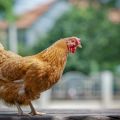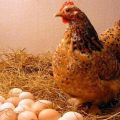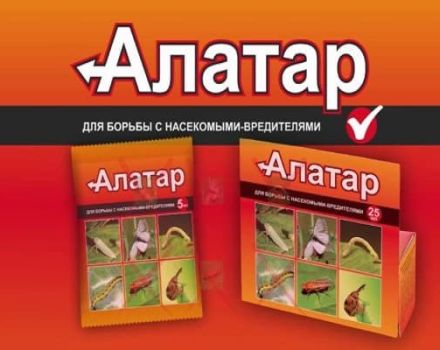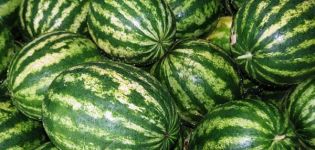Description of the best treatment methods and why chickens fall to their feet
Many farmers and poultry breeders who are engaged in raising a household have repeatedly encountered diseases in chickens and chickens. Disorders of the musculoskeletal system are fraught not only with reduced productivity and high costs of treatment, but also with a high probability of mortality. That is why it is so important to know the causes and treatment if chickens fall to their feet.
Possible causes of falling chickens and chickens on their feet
Chickens and chickens fall to their feet due to many reasons: a lack of vitamins, an uncomfortable place of residence, illness and disorders, or if they do not receive the necessary food. In order to prevent the development of the disease and the subsequent death of the animal, one should be aware of the accompanying signs of a particular disorder.
Marek's disease
If chickens or chickens sit on their feet, the cause may be Marek's illness. The causative agent of the disease is the herpes virus. Clinical manifestations are as follows: unnatural gait, twisting of the neck, drooping tail and wings. The bird begins to limp and falls to its feet as a result. You should pay attention to the iris of the eyes - the color may change. Over time, the bird pretty much loses weight, becomes lethargic and dies.
Curved and curled fingers
When the toes are curved, the chicken begins to move on the side of the foot. Curliness in a bird is manifested by curved fingers that are directed downward. Such a violation is provoked by trauma and hypothermia, but curliness is also often genetically transmitted or occurs during the incubation period. There is no cure for this.
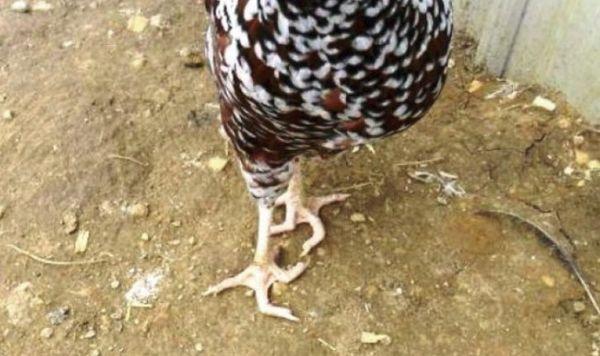
Knemidocoptosis
If the chicken falls and does not get up, it may be a late stage of knemidocoptosis. With this disorder, scaly growths form on the paws, which are accompanied by dermatitis and scabies. The provocateur of the disease is a subcutaneous tick. The infected bird must be isolated.
Chicken lame
Lameness in chickens is associated with mechanical damage to the paws, which was obtained as a result of injury, dislocation or sprain. If the bird does not walk well, it most likely has joint swelling or an open wound. If the limb is damaged, the chickens lie motionless or limp.
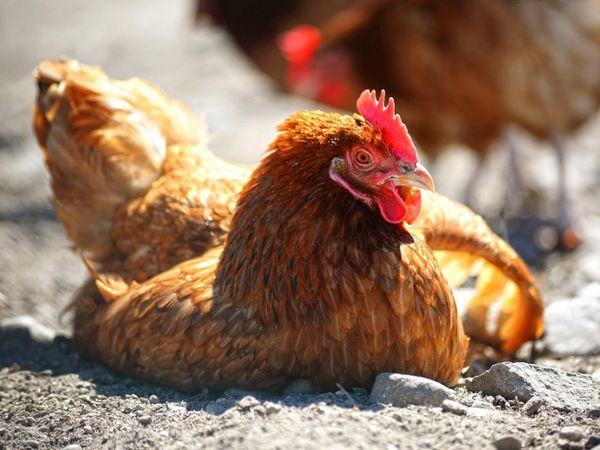
Incorrect containment conditions
One of the main mistakes in keeping birds is overcrowding and high population density of the chicken coop. But also quite often the chicken coop does not meet the sanitary and hygienic standards.Infections spread easily if ventilation is not available, and high perches can cause injury.
Low temperature leads to hypothermia, as a result of which limbs fail in pets.
Poor nutrition
If the diet of a bird is not enriched with minerals, nutrients and vitamins, it becomes weak and sick. The diet should contain greens, as well as sources of calcium: bone meal, chalk, shell rock. Often a fall on the paws is associated with vitamin deficiency. What to do in this case? Enrich the diet with vegetables: cabbage, beets, carrots.

Frostbite
Frostbite of paws in a chicken can be easily calculated by the following signs: the skin has a bluish-black tint, and the limb itself is swollen. This phenomenon occurred after walking during the cold season. The pallor of the scallop and earrings is also manifested, the bird has a convulsion, it is breathing heavily and staggering. If the paws fail, necrosis may develop.
Perosis
In the case of this disease in birds, there is a weakening of the ligaments and displacement of the tendons in the limbs. Typically, the disorder occurs in broilers that grow rapidly. But the disease also develops due to insufficient content of B vitamins, manganese, valuable acids, choline and biotin. A characteristic symptom is unnaturally twisted paws. The sick bird hardly eats, moves little or does not get up at all.
Gout
If the bird sits on its paws and does not move, it is most likely that an excess amount of salts and uric acid has accumulated in its joints. Expanded, hardened joints with bumps are obvious signs of such a disorder. The reason lies in long-term feeding with compound feed, including fish or meat and bone meal.
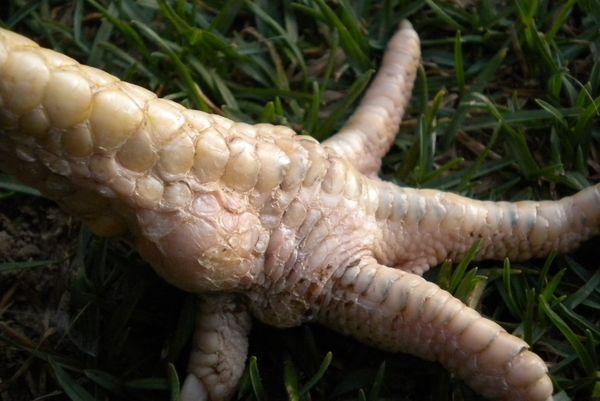
Rickets
Due to the deficiency of vitamin D and lack of sunlight, it can be observed that the chicken fell on its paws and does not move. Such a violation is called rickets. Violation of metabolic processes occurs due to vitamin deficiency and affects, as a rule, young animals. The bird has chronic weakness and impaired bone formation.
Reovirus infection of chickens
This disease includes several disorders that are provoked by reovirus. Clinically, they do not have pronounced symptoms, however, it is possible to determine the pathology if the chicken is limping, breathing heavily and eating little. Later stages of the disease are accompanied by ruptures of the tendons of the limb and cartilage.
Tenosynovitis, arthritis
Both diseases are characterized by inflammatory processes. With tendovaginitis, the localization area is the articular sheaths and tendons, and with arthritis, the joints. Often the cause is an infectious lesion, trauma. Arthritis develops as a result of an unbalanced diet, injury, or the ingress of the virus into the chicken's body. Sick birds limp and move little.
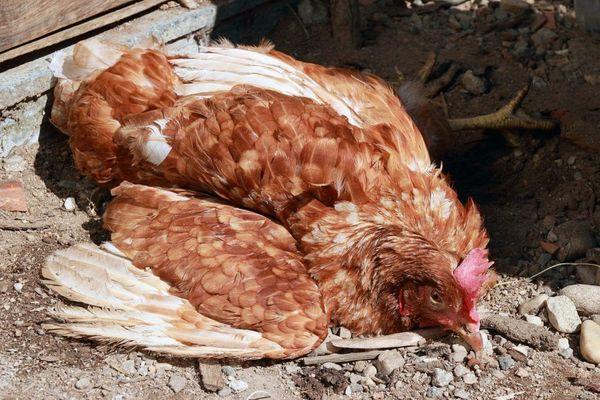
Trauma
If the ligament is fractured, cut, dislocated, torn or sprained, the chicken can sit on its paws. If the chicks are injured, it is imperative to clean the wound, otherwise the condition may worsen over time. Affected chickens will die without proper care.
Treatment of diseases
As soon as the first signs were noticed, you need to immediately start treating the bird:
- in case of disorders in the joints, the diet is replenished with tricalcium phosphate;
- in case of inflammatory processes in the tendons, the feed is enriched with vitamin B and manganese;
- for arthritis and tendovaginitis, birds are fed multivitamin supplements, antiviral and antibacterial drugs are used for a week, and paws are also lubricated with syntamycin ointment or fish oil;
- Knemidocoptosis is treated with acaricidal agents: the solution is heated, poured into a basin and the paws of a sick chicken are immersed;
- with perosis, adult chickens are given vitamins B4, B12 and B7;
- in case of injuries and lameness, the bird is set aside, the wound is treated.
It is recommended that a weak and sick chicken be removed from its relatives immediately, since the stronger ones can peck it.
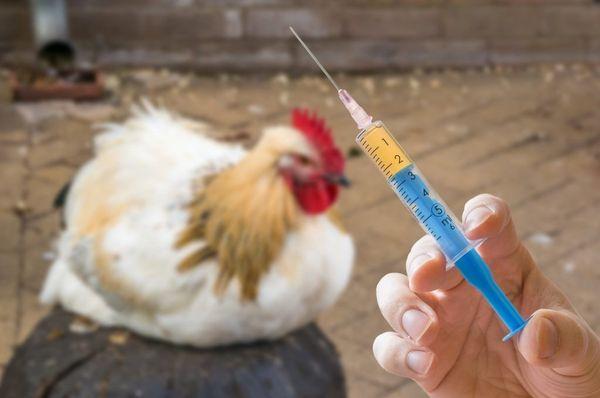
Disease prevention
Preventive measures consist in creating comfortable conditions for keeping birds, rational nutrition and timely vaccination. The house should be kept clean, as well as feeders and drinkers.
One of the main conditions for the comfortable keeping of chickens is a normal temperature regime and ventilation - chickens do not tolerate cold and drafts poorly. It is also important to follow a balanced diet - food should be fortified with vitamins and minerals.
It will not be superfluous to add calcium-containing mixtures to the diet.
As for nests and perches, their height should not exceed 0.5 meters. Another significant preventive measure is regular walking, during which chickens receive vitamins from pasture.




